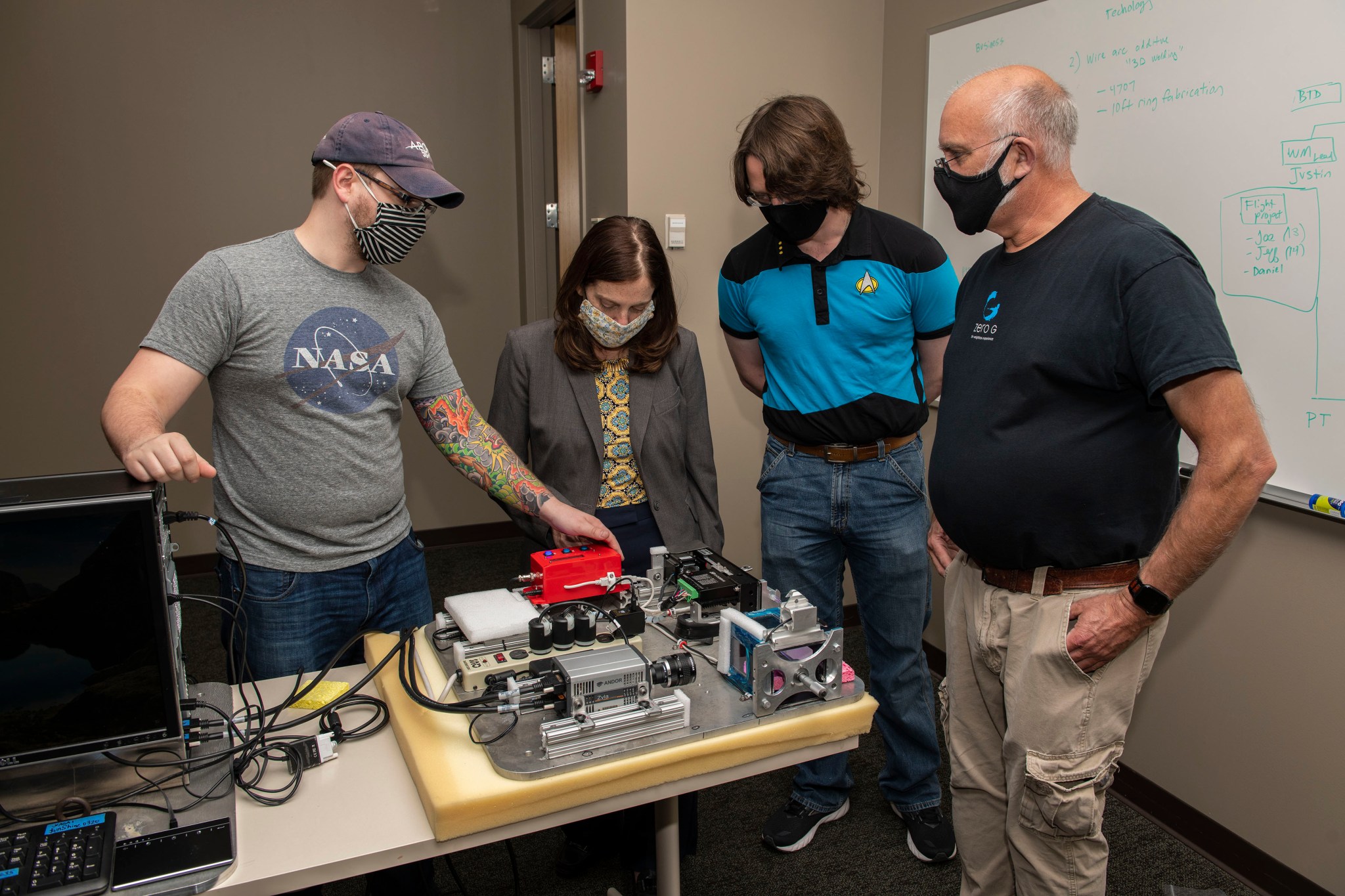Understanding how an experimental payload will respond to the conditions of space is crucial to a researcher’s ability to confirm designs or make necessary adjustments before progressing to more costly orbital deployments. To do so, scientists often use a modified airplane that achieves periods of variable gravity through a series of maneuvers called parabolas. These parabolic flights provide a gateway to weightlessness, allowing research teams to interact with their hardware in zero gravity conditions for intervals of approximately 22 seconds.
A parabolic flight campaign beginning in late April and continuing in early May will take place in Fort Lauderdale, Florida. The flights are provided by ZERO-G and are helping to advance several promising space technologies.
NASA’s Flight Opportunities program, within the Space Technology Mission Directorate, makes these experiment flights possible by facilitating rapid demonstration of promising technologies for space exploration, discovery, and results benefit life on Earth.
“By supporting testing on parabolic flights we take technology from ground-based laboratories into relevant environments to improve readiness and validate feasibility while reducing the costs and technical risks of future missions,” said Earl Adams, parabolic flight campaign manager for Flight Opportunities.
The experiment, developed by NASA’s Marshall Space Flight Center in Huntsville, Alabama, and Rensselaer Polytechnic Institute of Troy, New York, studies the formation of potentially destructive amyloid fibrils, or protein clusters, like those found in the brain tissue of patients battling neurodegenerative diseases. Such illnesses may damage neurons, the drivers of the human nervous system. Experimentation in microgravity provides the opportunity to study amyloid fibril formation in conditions more analogous to those found in the human body than can be studied in a ground-based laboratory environment.
The test apparatus consists of a syringe that holds solution to be dispensed, a tube capable of dispensing a stable liquid drop, and a motor that is activated to drive the piston in the syringe to dispense the liquid. During flight, video cameras will be in position to capture the behavior of the fluid droplet as it is dispensed.
“This flight opportunity is enhancing our knowledge of how fluids behave in space and is bringing us closer to a breakthrough that could help explain the development of neurological diseases such as Alzheimer’s and Parkinson’s,” said Dr. Sridhar Gorti, project scientist for the experiment at Marshall. “The team, a government sponsored collaboration with research and industry, is passionate about unlocking the mechanisms of these devastating diseases.”
This flight aims to demonstrate hardware capabilities to deploy and pin several liquid solutions of differing surface tensions that will be used in future ring-sheared drop and International Space Station experiments. The data collected will establish the effects of surface tension on liquid drop growth and pinning. Information learned in flight will enable corrective measures and processes for the experiment before additional testing on the space station.
Understanding Parabolic Flight
How is zero gravity achieved in flight? A modified Boeing 727 from ZERO-G, named G-Force One, performs a maneuver where the aircraft quickly moves to a rapidly increasing altitude and into a trajectory that follows the shape of a parabola and the power thrust is reduced. The gravitational force on the plane during this maneuver goes from 1.8 g to 0 g for about 22 seconds. The pilots work in tandem to maintain the temporary zero gravity while also controlling the roll angle and engine thrust. An exit maneuver is then completed on the descending part of the parabola to return the aircraft to a stabilized altitude level.
Follow NASA’s Watch the Skies blog in the coming week for the latest updates on the team, the parabolic flight, and the results of the ring-sheared drop experiment.
Goodwin, an Media Fusion employee, supports the Office of Strategic Analysis & Communications.




























